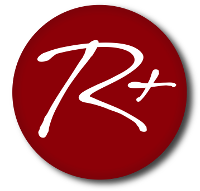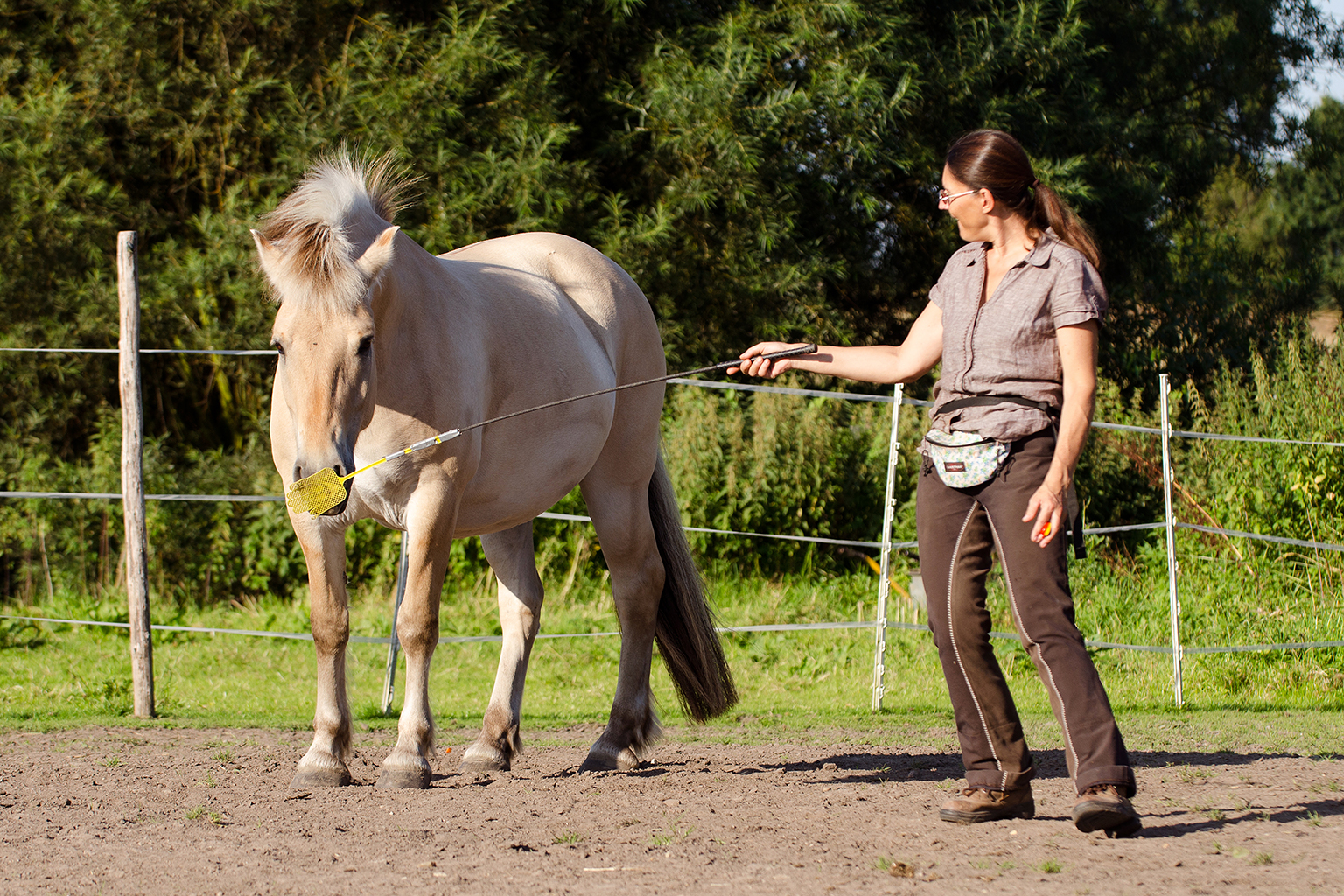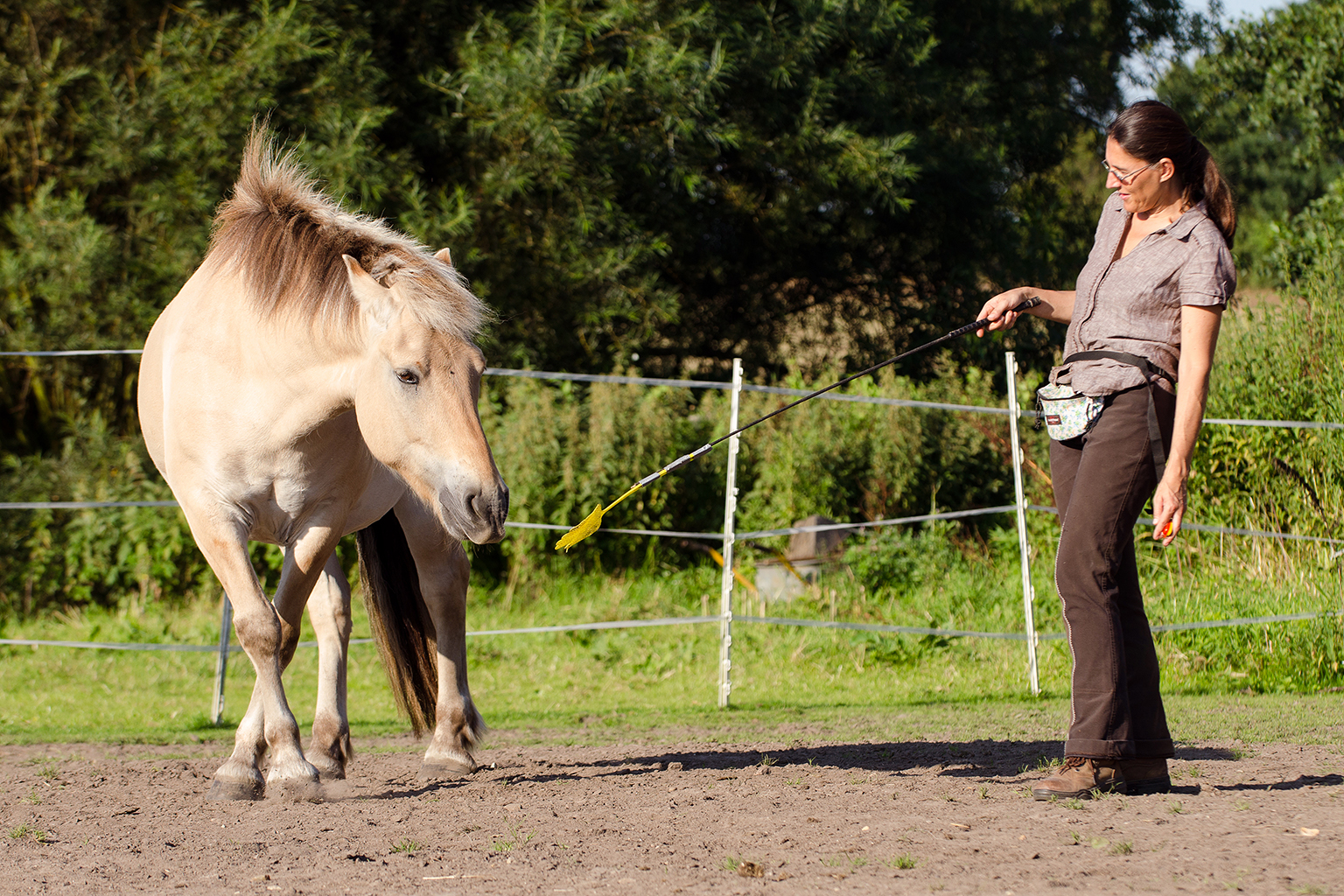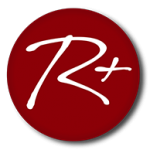Understanding target training
Establishing turns with a target stick
A target always represents an objective for the horse; it follows the target because it is attractive for the horse due to its positively charged meaning. Thus, target training can be considered an opposite to conventional training with whips which usually drive the horse forward. In contrast, our horse follows the pull of our target object in target training. Lena and the Icelandic horse gelding Yri demonstrate in the following video how they establish a specific form of movement without using pressure; it becomes possible to develop a new trick, in our case the turn, just by using a target stick.
Subtitles available in German and English
Initial analysis
Whenever we want to work on something new, we have to make an initial analysis first, and consider our four-legged student’s level of understanding in order to accordingly develop individual training steps. Yri has been trained before, and is able to follow the target in any direction. First, Lena lets him follow the target several times to direct his focus towards the target. This tells Yri her intention, and he knows that the following lesson will be about following a target. After an initial analysis, she successively adapts her approach, and gradually establishes the desired turn. A first possibility to change Yri’s movement pattern is moving the target stick over his back in order to let him follow in a semicircle; a click follows at the end of this semicircle, and the treat guides Yri to complete the turn to a full circle. In short, Lena temporally shifts the treat spot by half a lap, and thus creates a first turn.
Draw a figure in the air
Generally speaking, we draw a certain direction of movement for the horse in the air with the target stick. We can visualize the figure we draw in the air by imagining that our pen’s front end is the tip of a pen.
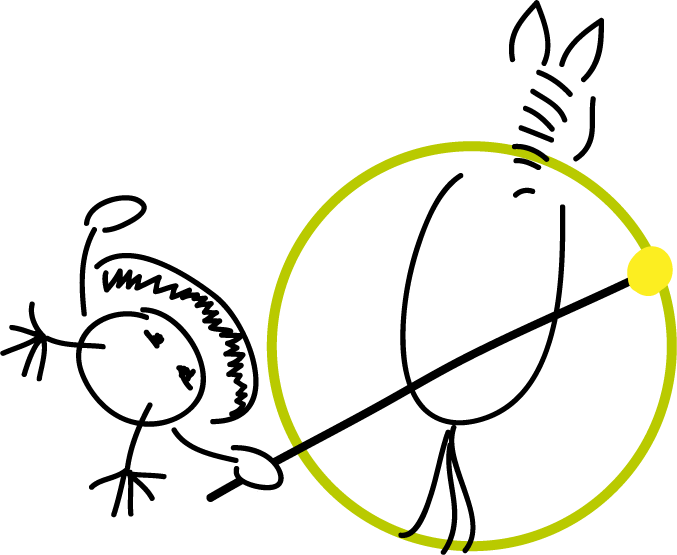
Reducing use of the target
It is important to gradually reduce the aid of the target stick so that we do not keep relying on it to guide our horse; over time it should learn to independently perform the movement. For this purpose, we first define our own position in which we would like to give the signal for the behavioral response “turn” later on. We start by giving the signal we have chosen. Then, we use the aid of the target stick. Next, we click, and try to use the target stick as discretely as possible until we hand over the treat. We can entirely leave out the target stick after this initial training period, or we can use it to precisely improve the horse’s speed and direction of movement.
Side note – Off track
The muscle memory
Generally speaking, movement patterns are unconsciously internalized by the horse, and are above all captured quasi-holistically in their entirety. It is possible to consciously train specific details in small steps. Yet, the horse always needs a sequence that allows it to memorize the entire movement pattern in its long-term memory; this happens by physically executing the sequence without being interrupted by external details and events such as rewards. This is one of the most essential principles when training according to RPlus: We always give the horse enough time to discover and refine its very own capacity of movement. So, our horse needs to understand that we aim for the complete motion sequence in our common work first, and will be able to develop its own means of expression within this framework later. Eventually, this freedom of execution can offer creative input for further development in return.
Do not generalize too soon
Of course, we can eventually establish the training lesson “turn” in both directions. It is much easier, however, to initially only train the movement pattern of one direction. We can introduce the analogous movement in the opposite direction later after the horse has a good command of the turn in the first direction. What is more, if the horse is able to perform the turn in both directions, it becomes possible to switch between directions, and balance the horse by this training lesson.
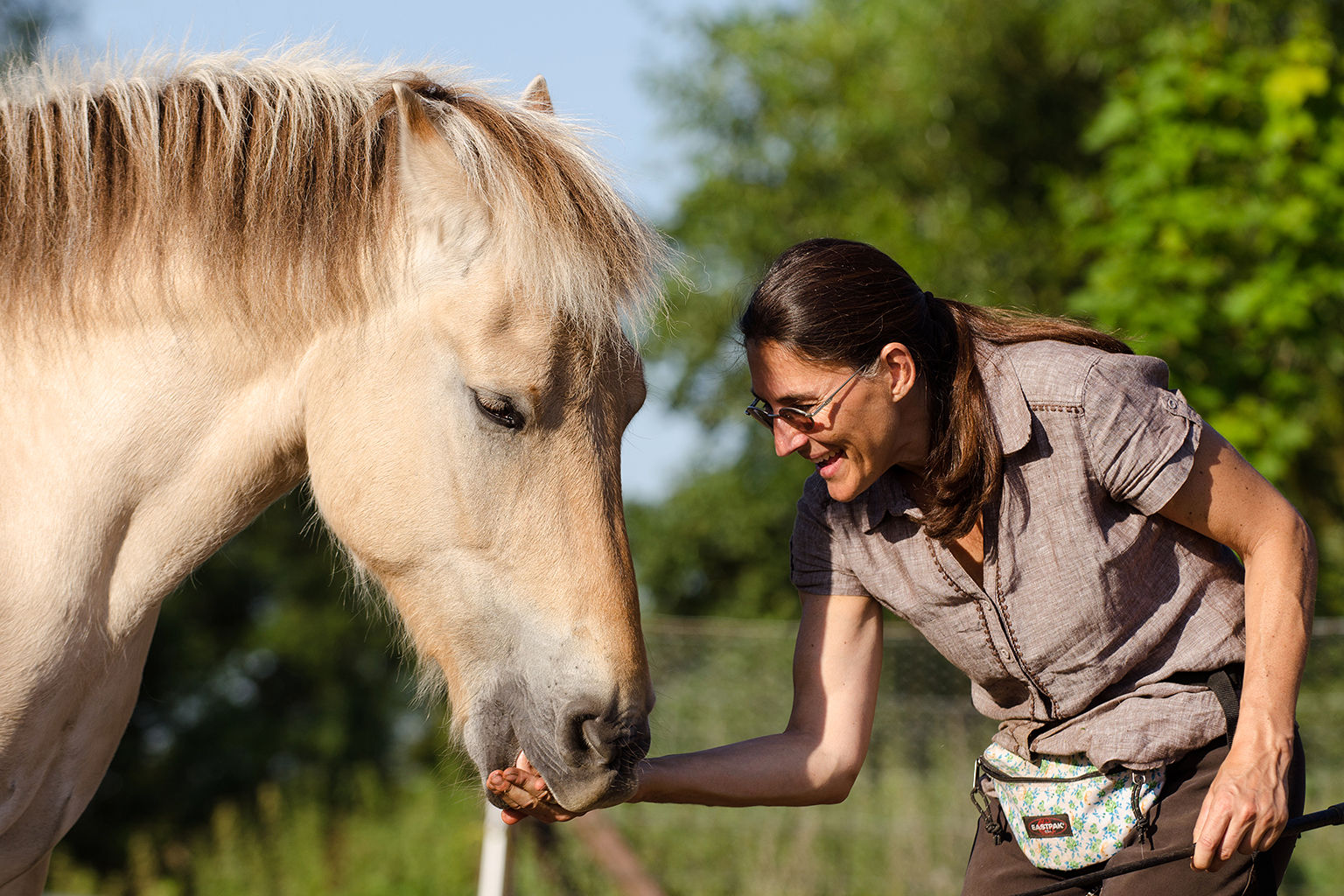
Why complete the movement with food?
There is always the possibility to hand over the treat directly after the click; this corresponds to the usual rule of thumb to give the reward as quickly as possible after signaling the sound. However, we gain an additional opportunity to intentionally include a further reinforcer into our training if we deliberately hand over the treat only after a complete turn. Thus, the click initiates the reward period; from the perspective of learning theory, everything happening between the click and the actual reward is always reinforced. In other words, shifting the treat spot to the end of the turn helps Yri to better grasp the full motion sequence, and he will not only remember the beginning of the turn, but also how he completed the turn around his own axis. Furthermore, he thereby additionally memorizes the movement in his muscle memory, and thus memorizes the turn more profoundly.
Marlitt Wendt & Conny Ranz

